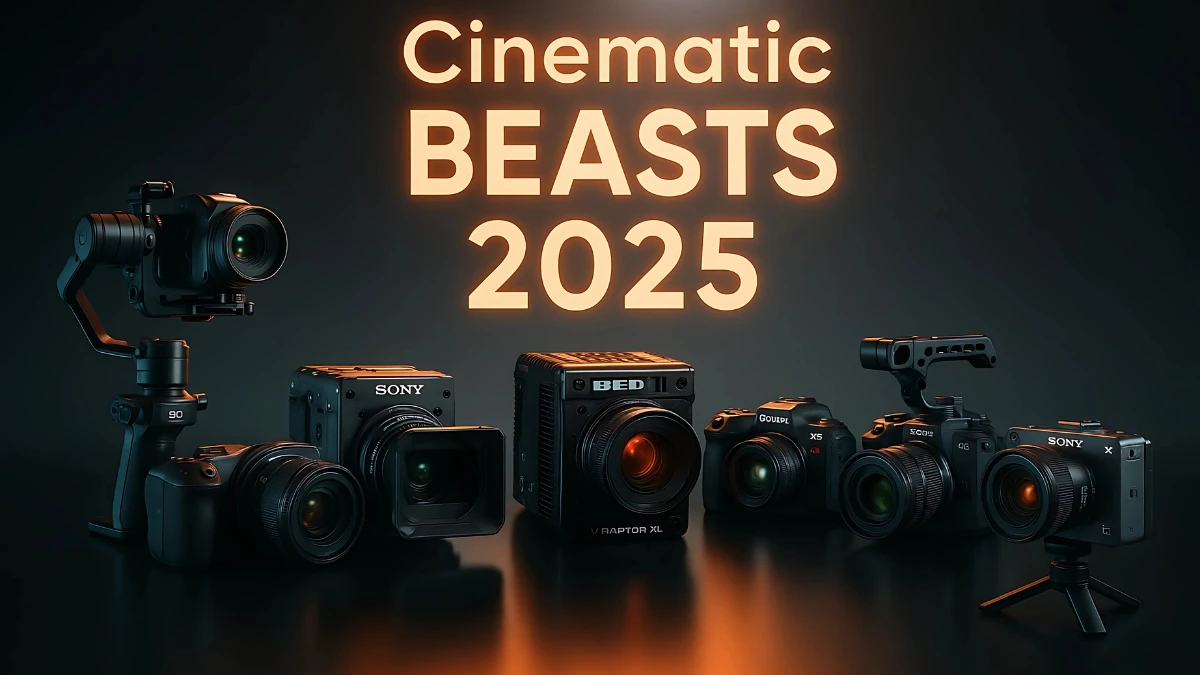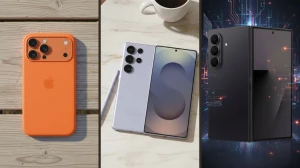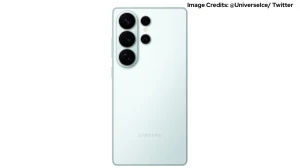Top 7 Cameras in 2025 That Make Every Shot Look Cinematic
In the world of filmmaking and content creation, choosing the right camera can be a daunting task, especially with the wide range of options available today.
From budget-friendly models to high-end cinema cameras used on Hollywood sets, the variety of choices can overwhelm even the most seasoned creators.
However, the perfect cinematic camera is one that strikes a balance between your creative vision, budget, and technical needs.
Whether you’re a solo creator, an independent filmmaker, or working on large-scale productions, the right camera can make all the difference.
In this guide, we’ll explore the top cinematic cameras of 2025, highlighting the best models across various price points and use cases.
From versatile all-around champions like the Sony FX3 to the innovative DJI Ronin 4D, each camera offers unique features that cater to different shooting styles and production requirements.
Let’s dive into the world of cinematic technology and discover which camera is right for you.
| Rank | Camera |
|---|---|
| 7 | DJI Ronin 4D |
| 6 | Sony Venice 2 |
| 5 | Blackmagic Pocket Cinema Camera 6K Pro |
| 4 | RED V-Raptor XL |
| 3 | Panasonic Lumix S5 II |
| 2 | Canon R5 C |
| 1 | Sony FX3 |
7. DJI Ronin 4D - The Innovation Leader
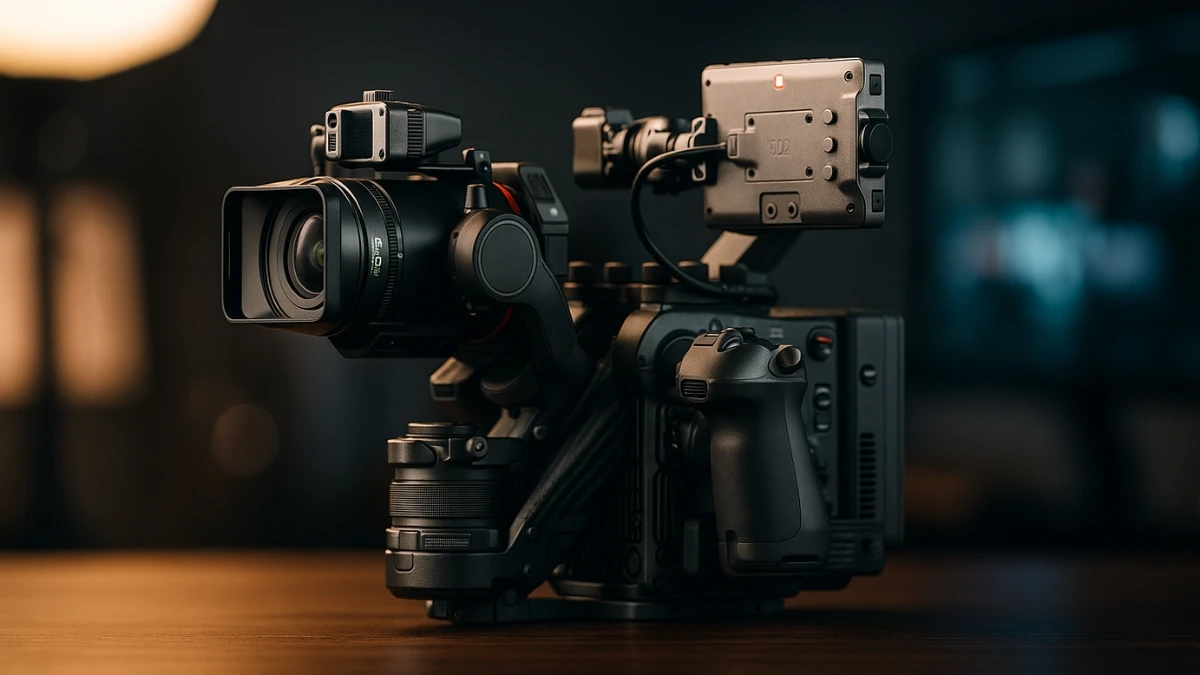
One of the most innovative cinema cameras today is the DJI Ronin 4D, available in 6K and 8K versions. This "flightless drone" represents the first cinema camera with integrated gimbal stabilization, fundamentally changing how we think about camera movement and stabilization.
The Ronin 4D combines a professional cinema camera with DJI's industry-leading gimbal technology, creating a system that delivers impossibly smooth footage without the need for external stabilizers.
The integrated design means perfect balance and seamless operation, while AI-powered subject tracking keeps your subjects in focus even during complex movements.
What sets the Ronin 4D apart is its ability to capture dynamic shots that would typically require a full camera crew with specialized equipment.
The 4-axis gimbal system compensates for movement in ways that traditional stabilizers simply cannot match, while the professional monitoring and control systems ensure you never sacrifice quality for convenience.
| Price Range | $7,200-$11,000 |
| Best For | Dynamic movement |
6. Sony Venice 2 - Hollywood's Choice
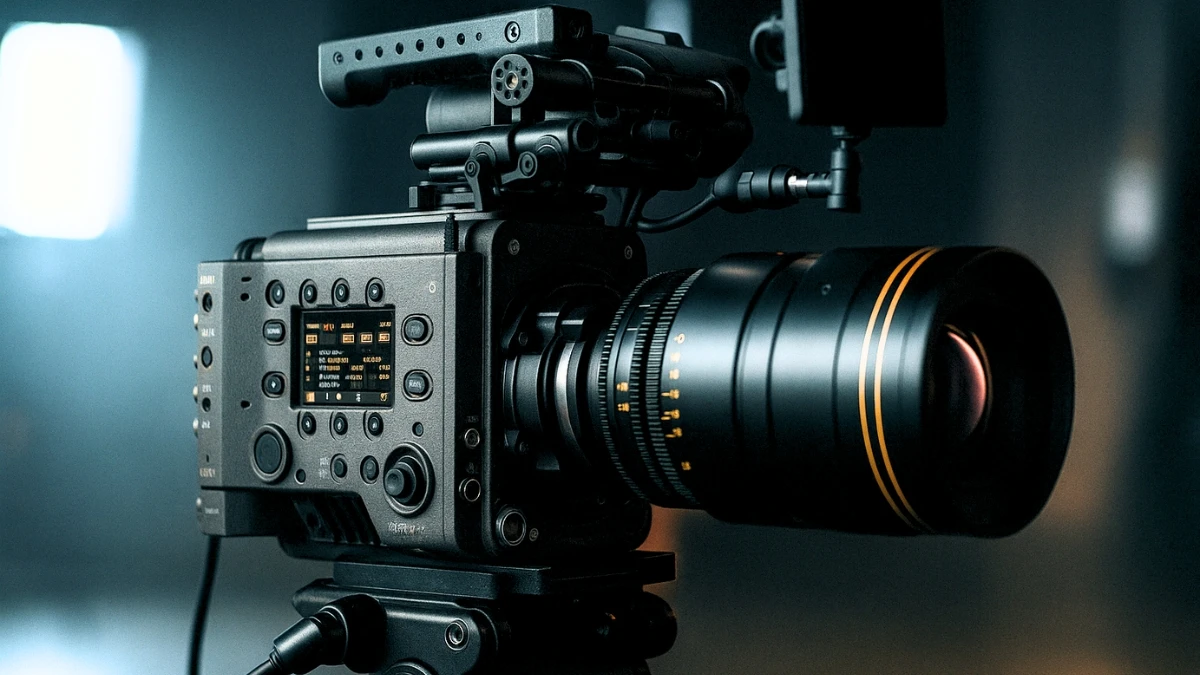
Sony's Venice 2 is known for its luscious color science and dual ISO settings—it's the camera professionals warn you about because it captures those artful shots while ensuring every frame feels directed by a skilled professional. This camera has become a staple on major film productions for good reason.
The Venice 2's 8.6K full-frame sensor can operate in both full-frame and Super 35 modes, providing flexibility for different lens choices and aesthetic preferences.
The dual base ISO technology delivers exceptional performance in both bright daylight and challenging low-light conditions, while Sony's renowned color science renders skin tones and natural environments with remarkable fidelity.
The VENICE has maintained its position in the top three cameras used in major film festivals, testament to its reliability and image quality in professional environments.
Features like the Venice Rialto system allow for remote camera head operation, expanding creative possibilities for tight spaces and unique angles.
| Price Range | $42,000+ |
| Best For | Hollywood features |
5. Blackmagic Pocket Cinema Camera 6K Pro - The Indie Darling
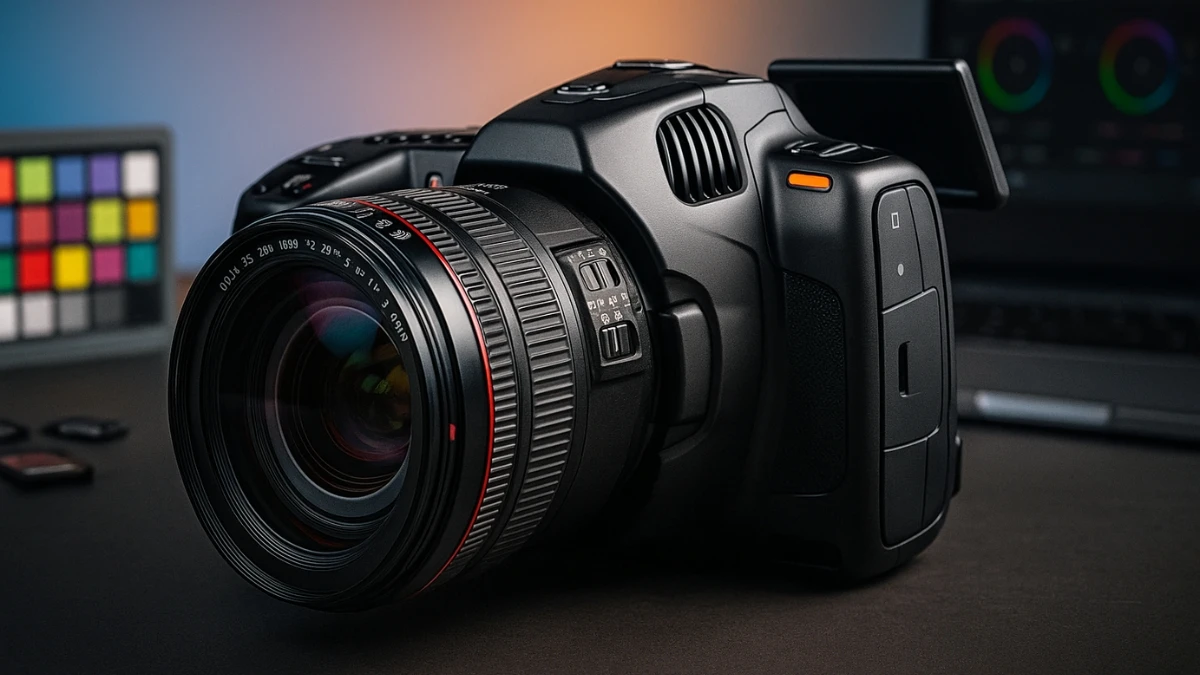
The Blackmagic Design Pocket Cinema 4K uses a Micro Four Thirds sensor to capture DCI 4K video with up to 13 stops of dynamic range, while the 6K Pro version takes this concept even further with a Super 35 sensor that delivers authentic cinema-quality footage at an accessible price point.
What makes Blackmagic cameras special is their integration with DaVinci Resolve, providing a seamless workflow from capture to final delivery.
The 6K Pro offers professional I/O options, including XLR inputs and SDI outputs, making it a serious tool despite its compact size and relatively affordable price.
The camera supports 10-bit ProRes and 12-bit CinemaDNG RAW recording, giving filmmakers unprecedented flexibility in post-production.
The built-in NLE timeline and metadata support streamline the editing process, while the camera's distinctive ergonomics and interface design feel refreshingly different from traditional camera manufacturers.
| Price Range | $2,500-$2,800 |
| Best For | Independent films |
4. RED V-Raptor XL - Professional Standard
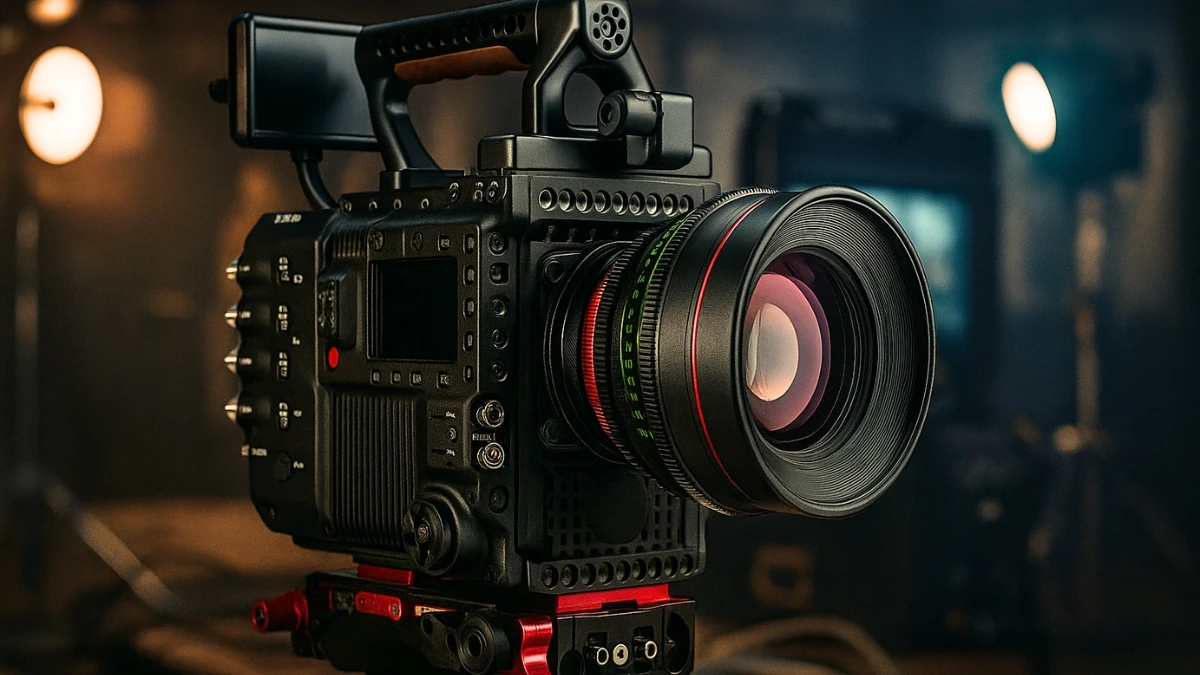
RED continues to hold the crown with its V-Raptor XL, packing an 8K VV sensor capable of recording images so detailed, you'll feel like you can step right into them.
This camera represents the cutting edge of digital cinema technology, offering image quality that frequently surpasses traditional film.
The V-Raptor XL's modular design philosophy allows cinematographers to configure the camera for any shooting scenario, from handheld documentary work to elaborate studio setups.
RED's signature color science provides bold, saturated images that grade beautifully, while the 8K sensor offers flexibility for reframing, stabilization, and future-proofing your productions.
What sets RED apart isn't just image quality—it's the ecosystem. RED cameras integrate seamlessly with professional workflows, from on-set monitoring to post-production pipelines.
The V-Raptor XL supports industry-standard accessories and protocols, making it a safe choice for productions where compatibility and reliability are paramount.
| Price Range | $24,500+ |
| Best For | Professional productions |
3. Panasonic Lumix S5 II - Best Value Champion
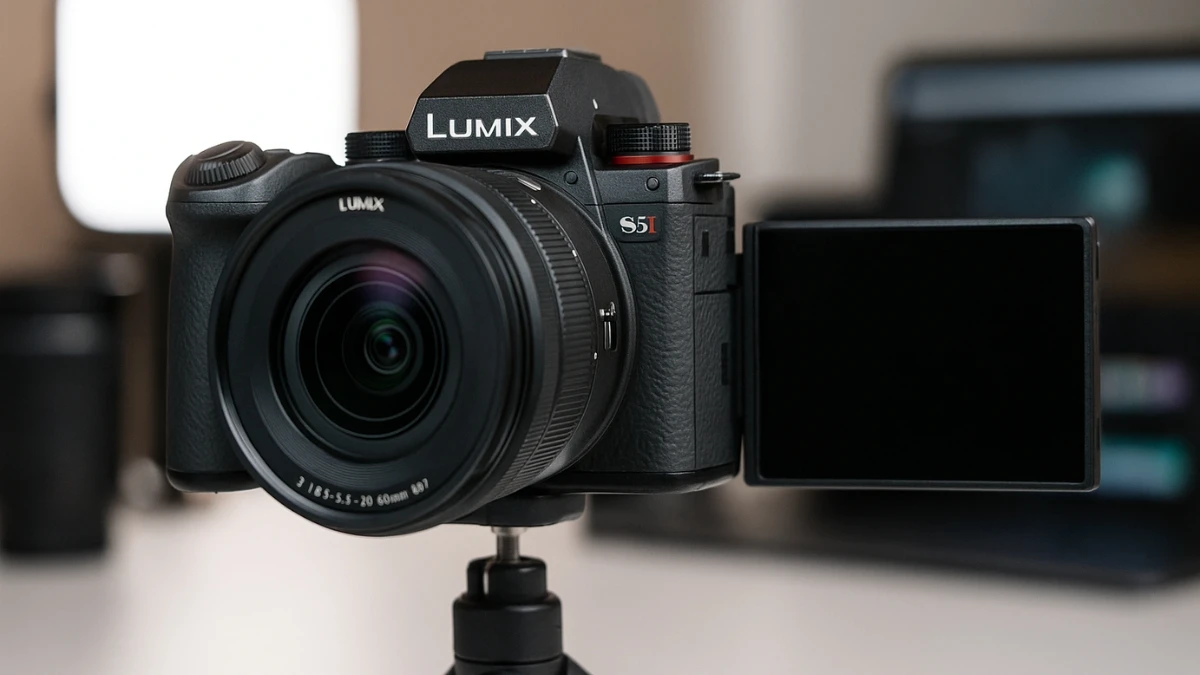
The Panasonic LUMIX S5 II is the best video camera we've tested when considering value for the price, loaded with features that equal and even surpass more expensive options.
This camera represents a breakthrough moment for Panasonic, addressing previous weaknesses while maintaining their traditional strengths.
The S5 II offers 6K open gate recording, 4K at 60 fps, and internal 10-bit 4:2:2 capture, with support for a wide range of codecs and recording formats.
Most importantly, the S5 II is the first LUMIX camera to feature phase-detection autofocus, which significantly improves subject tracking compared to its predecessor, particularly in video mode.
The camera's full-frame sensor delivers excellent video quality, and it has one of the best in-body image stabilization (IBIS) systems among full-frame models.
For filmmakers on a budget who refuse to compromise on quality, the S5 II offers an almost unbeatable combination of features and affordability.
| Price Range | $2,000-$2,500 |
| Best For | Best value |
2. Canon R5 C - Hybrid Powerhouse
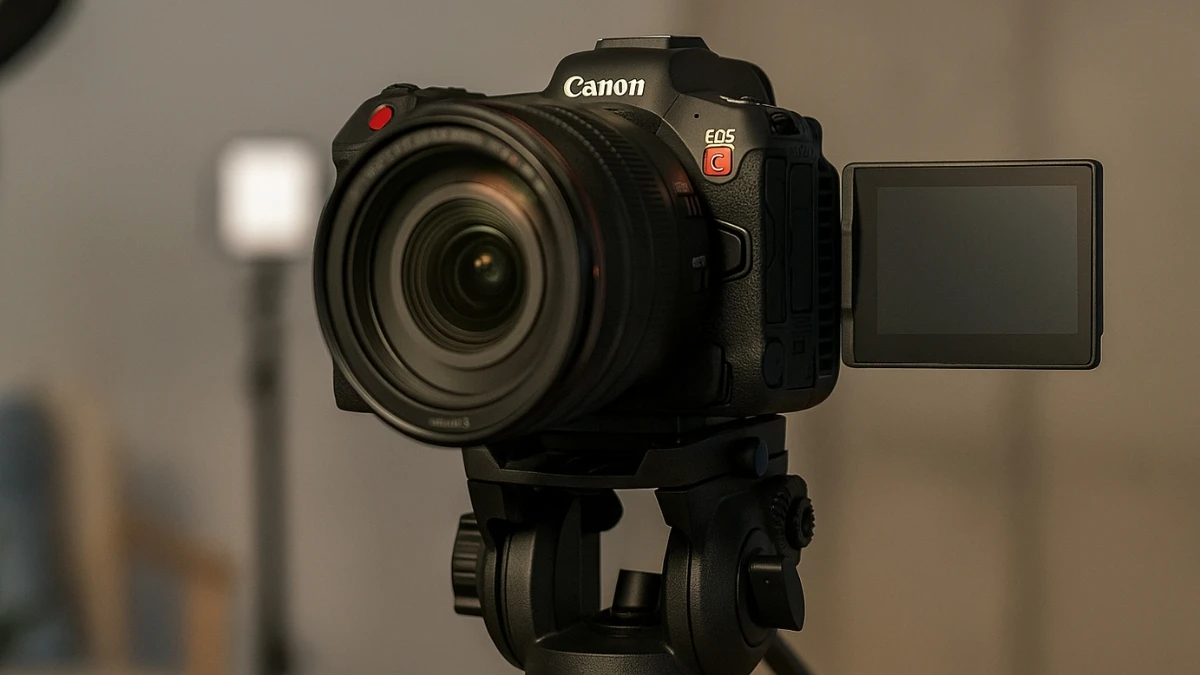
The Canon R5 C sits at the top of many cinema camera lists in 2025, representing Canon's most successful fusion of stills and video capabilities. This camera doesn't ask you to choose between photography and filmmaking—it excels at both.
The R5 C's 8K internal recording capability sets it apart from most competitors, providing unprecedented resolution for those who need it while offering excellent 4K performance for standard workflows.
Canon's legendary color science shines through in every frame, delivering the warm, pleasing skin tones and rich color rendition that have made Canon cameras favorites among portrait photographers and narrative filmmakers alike.
What makes the R5 C particularly appealing is its hybrid nature. Unlike dedicated cinema cameras, you can seamlessly switch between high-end video production and professional photography without changing gear.
The dual card slots provide redundancy for critical shoots, while the professional cooling system allows for extended recording sessions without overheating concerns.
| Price Range | $4,300-$4,800 |
| Best For | Hybrid photo/video |
1. Sony FX3 - The All-Around Champion

The Sony FX3 continues to dominate the prosumer cinema camera market in 2025, and for good reason. This well-rounded camera offers something for everyone and is easy to pick up while shooting pro-quality video.
What sets the FX3 apart is its incredible versatility without sacrificing professional capabilities.
At its heart lies a full-frame sensor capable of capturing up to UHD 4K with 10-bit 4:2:2 internal capture or up to 16-bit RAW externally.
The camera's dual native ISO system provides exceptional low-light performance, with an ISO range of 80 to 406,600, making it perfect for run-and-gun documentary work or moody narrative scenes.
For slow-motion enthusiasts, the FX3 delivers fantastic 120 fps in 4K and top frame rates of 240 frames per second in HD.
The 5-axis in-body image stabilization ensures your handheld shots remain smooth, while full-size XLR inputs eliminate the workflow complications that come with mini-XLR connections.
| Price Range | $3,900-$4,200 |
| Best For | All-around versatility |
What Makes a Camera "Cinematic"?
The term "cinematic" isn't just marketing speak—it refers to specific technical and aesthetic qualities that mirror the look and feel of professional film production.
Dynamic Range is perhaps the most critical factor. Cinema cameras are designed to capture video with a dynamic range that matches that of film: around 13 stops, with modern cinema cameras reproducing 14 or more stops. This expanded range means you can capture detail in both deep shadows and bright highlights simultaneously, giving you incredible flexibility during color grading and creating that rich, layered look we associate with movies.
Color Science refers to how a camera's sensor and processing pipeline interpret and render colors. Different manufacturers have distinct approaches—Canon's warm, pleasing skin tones, Sony's neutral accuracy, or RED's bold, saturated palette. The best cinematic cameras don't just capture colors; they render them in ways that evoke emotion and support your story.
Sensor Size plays a massive role in achieving that coveted shallow depth of field. Larger sensors with larger pixels allow the camera to gather more light at once, which increases low-light performance and reduces noise while allowing each pixel to accept more light before clipping from overexposure. This translates to better background separation and more professional-looking footage.
Finally, Professional Codec Support ensures your camera can capture the maximum amount of color information. Features like 10-bit recording, ProRes compatibility, and RAW output give you the flexibility to push your footage in post-production without it falling apart—essential for achieving that polished, cinematic grade.
Choosing Your Perfect Cinematic Camera
Selecting the right cinematic camera involves balancing budget, shooting style, and technical requirements. Here's how to narrow down your options:
By Budget Tier
Under $3,000: The Panasonic S5 II and Blackmagic 6K Pro offer exceptional value in this range. The S5 II provides better autofocus and stabilization for run-and-gun work, while the Blackmagic delivers superior image quality for controlled environments.
$3,000-$8,000: This sweet spot includes the Sony FX3, Canon R5 C, and DJI Ronin 4D. The FX3 offers the best overall balance, the R5 C excels for hybrid shooters, and the Ronin 4D revolutionizes movement and stabilization.
$8,000+: The RED V-Raptor XL and Sony Venice 2 represent the pinnacle of digital cinema technology. Choose RED for modular flexibility and distinctive color science, or Sony for proven reliability and Hollywood-standard workflows.
By Shooting Style
- Documentary/Run-and-Gun: The Sony FX3 leads this category with excellent low-light performance, reliable autofocus, and professional audio inputs. The DJI Ronin 4D offers unprecedented stabilization for handheld work.
- Narrative Films: The RED V-Raptor XL and Sony Venice 2 provide the image quality and professional features necessary for serious narrative work. The Blackmagic 6K Pro offers similar quality at a fraction of the cost for independent productions.
- Commercial/Hybrid Work: The Canon R5 C excels when you need both photo and video capabilities, while the Panasonic S5 II provides professional features at a more accessible price point.
- Solo Creator: The DJI Ronin 4D and Sony FX3 are designed for single-operator use, offering features that reduce the need for additional crew members.
By Experience Level
- Beginner-Intermediate: Start with the Panasonic S5 II or Sony FX3. Both offer excellent automatic modes while providing room to grow into manual controls and advanced features.
- Advanced: The Canon R5 C, Blackmagic 6K Pro, and DJI Ronin 4D require more technical knowledge but reward users with superior image quality and creative control.
- Professional: The RED V-Raptor XL and Sony Venice 2 demand professional expertise but deliver uncompromising image quality and industry-standard workflows.
Disclaimer:
The information presented in this article is based on available product specifications, expert reviews, and market conditions as of 2025. Prices, features, and availability of the cameras mentioned may change over time as manufacturers release updates or new models. The recommendations and opinions provided are intended for informational purposes and should not be considered as endorsements or professional advice. Always verify current details with trusted retailers or official sources before making any purchase decisions.

